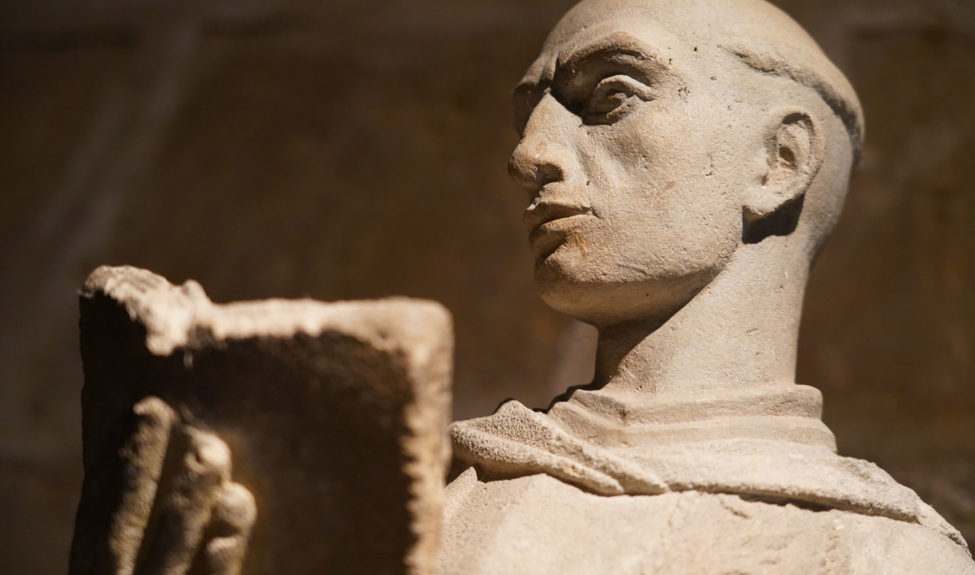Displaying Relics
Until the Revolution, this vaulted room, contiguous to the former abbey church, was used to keep objects required for religious ceremonies: vestments, vases, precious manuscripts …
Ever since the setting up of the Royaumont Foundation in 1964, it has reverted to a similar role, insofar as it houses religious statuary (a polychromatic Saint John, a polished wood statue of Christ), architectural elements such as a keystone from a choir vault in the former church, as well as commemorative plates linked to the history of the Goüin family…
Read more
Located at the North end of the monks’ building and connected to the transept of the abbey church, the sacristy housed the vases and vestments used for religious worship, as well as the abbey’s most precious manuscripts. Built with broken barrel vaults, it originally extended to the East with a now-demolished apse, the transverse arch capitals of which can still be made out in the masonry. The monk-priests would come in from the cloister and then access the church through a door leading to the South branch of the transept. The sacristy was also used to store books after the armarium, located in the vicinity, proved too small.
It seems the hall continued to be used for worship by the workers of the mill throughout the industrial period. Two former Royaumont monks, Don Beaugrand and Don Canonne, would come to say mass on alternate Sundays. The sacristy, at the time, was accessed through the ruins of the church and came to be called the “outside chapel”. In 1865, when the industrial machinery was removed, access from the cloister was restored. The chapel continued to be open to the general public on Sundays and holidays until 1871, when access was reserved to the orphans of the novitiate sponsored by the Association of the Sisters of the Holy Family of Bordeaux. As of 1874, it became known as the Chapel of the Sacred Heart.
The Goüins retained the chapel as such, and it hosted a number of family ceremonies. In 1949, Henry Goüin had new stained-glass windows put in, with geometric patterns and not much color, bringing together modernity and Cistercian inspiration.
Today the sacristy is home to a collection of remains and documents linked to the history of Royaumont and celebrates the memory of the former owners of the abbey who bequeathed the monument and part of their art collection to the foundation they set up in 1964.









